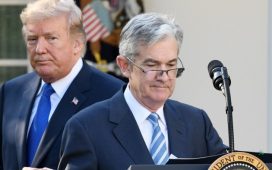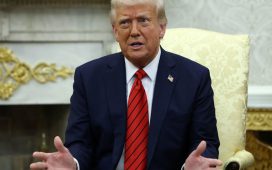Stay informed with free updates
Simply sign up to the Global inflation myFT Digest — delivered directly to your inbox.
The writer, an FT contributing editor, is chief executive of the Royal Society of Arts and former chief economist at the Bank of England
August is the height of the English cricket season. For cricket fans — I am one — rain earlier in the season made for “sticky wickets”, troublesome pitches where the ball does not come on to the bat as quickly and consistently as expected. On a sticky wicket, successful batting calls for a cautious, attritional approach.
Central bankers have themselves faced a sticky wicket for the past 18 months, with both growth and inflation stickier than expected. Neither has slowed as quickly or as consistently as economists’ models or financial markets’ yield curve projections had expected. Central banks, like batters, have responded to this with a more cautious, attritional approach to lowering interest rates.
Financial markets were expecting central banks to lower rates as smartly as they had raised them. Like the Grand Old Duke of York, having marched rates up to the top of the hill, central banks were expected to march them straight back down again. Yet more than a year on from their peak, we have seen only cautious 25bp rates cuts in the UK and Eurozone and nothing in the US.
This rate stickiness can be explained by the stickiness of growth and inflation. Despite the sharpest monetary policy tightening in decades, the US has repeatedly defied predictions of recession, with robust growth and around 7mn new jobs created. While growth in the UK and Eurozone has been more subdued, unemployment has remained low, also defying predictions.
Meanwhile, as headline inflation has fallen sharply back towards target this year, underlying price measures have exhibited greater stickiness. On average over the first half of this year, core inflation rates have exceeded target by 1-2 percentage points, and wage growth by 3-4 percentage points, in the US, UK and Eurozone. The key question this poses is why inflation has been stickier than expected and whether it will persist.
Two explanations for this are possible. On one view, the greater than expected persistence of inflation has been a cyclical phenomenon. A tighter than expected labour market, and for some goods and services, has enhanced the bargaining power of pay- and price-setters. This has enabled them to raise real wages and companies’ margins, which in turn has slowed the descent of underlying inflation.
An alternative view is that the recent inflation overshoot has caused a more lasting shift in inflation psychology, and hence in the longer-term expectations of wage- and price-setters. If this is the case then the stickiness of core inflation could be expected to persist long after a cyclical slowdown. Inflation persistence would then be a credibility issue rather than a cyclical one.
The balance of evidence always favoured the cyclical explanation. Central banks have given too much credence to the second hypothesis over the past year, leaving them a little behind the curve. But the jury is now in. Measures of longer-term inflation expectations are little changed, while most shorter-term measures have fallen sharply in lockstep with headline inflation. There is nothing to suggest a worrying upward shift in inflation psychology.
Meanwhile, there is evidence of the labour market slowing, perhaps sharply. This is clearest in leading indicators such as job vacancies which have fallen by around a third in the US and UK, and by more than 10 per cent in the Eurozone, from their peak. These are signs of a rapidly easing jobs market. Although economists have got their timing wrong, they may yet be proved right in their forecasts for US recession.
As for inflation, by weakening the bargaining hand of wage and price-setters, this cyclical slowing would be expected to dampen underlying pressures. And so it has, with core inflation and wage growth in the US, UK and Eurozone recently falling sharply. Most measures are now 2-3 percentage points below their peaks earlier in the year.
As underlying inflation has fallen without a corresponding fall in central bank interest rates, the real cost of borrowing has risen in the US, UK and Eurozone, from already elevated levels. This tightening of the monetary stance sits oddly with the downshift in underlying inflation and jobs, suggesting central banks risk finding themselves further behind the curve.
English cricket wickets are no longer sticky and nor are many of the world’s major economies, with inflation and activity downwardly mobile. In these circumstances, and having started behind the curve, we would expect central banks now to be playing catch-up, operating with greater agility in lowering interest rates. Despite getting their timing wrong, financial markets are now right to expect sharp, sizeable cuts over the year ahead.
On Friday, Fed Chair Jay Powell gave a speech at the Jackson Hole symposium in Wyoming. There, the ground is anything but sticky and Powell was clear that the time has come to commence US easing. But Powell remained non-committal and data-dependent on its speed and scale, a caution echoed recently by central banks in the Eurozone and UK. While some caution could be justified earlier in the year, that is harder to justify now. At a time when the economy requires them to lead, central banks are instead following. They need to change gear if the economy itself is not to come unstuck.






